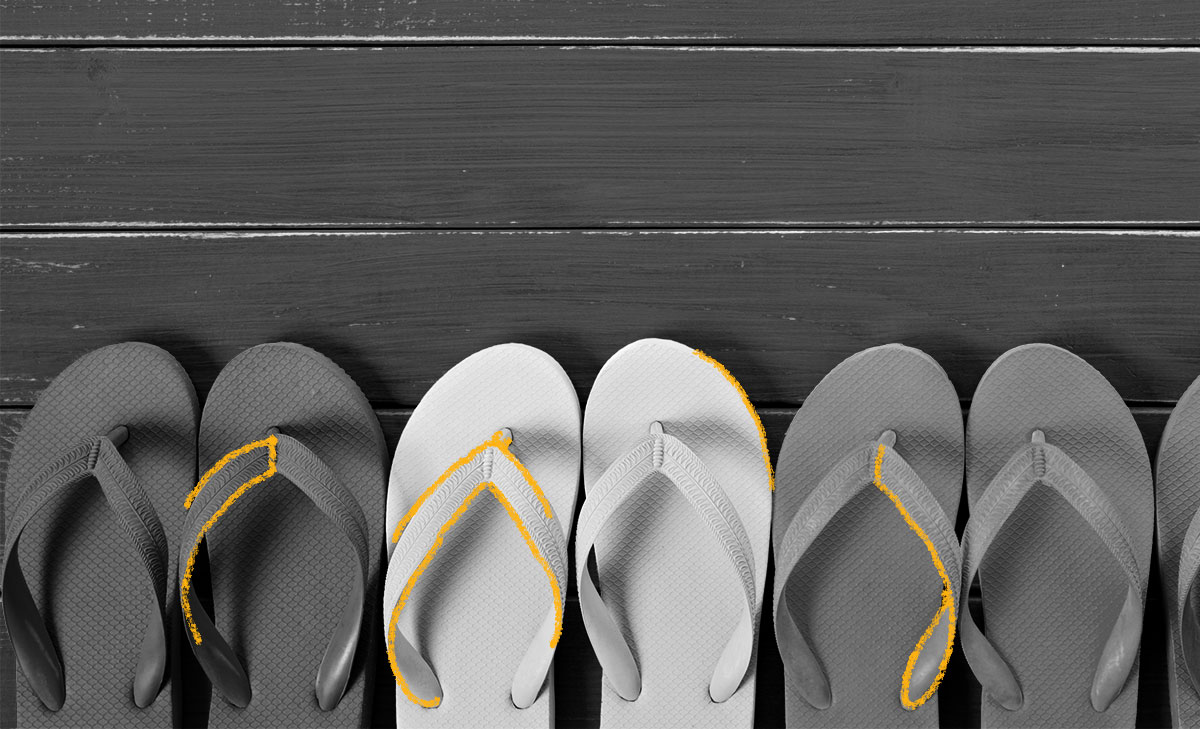Today we are taking a look at the history behind flip-flops! Now considered a summer footwear staple, flip-flops have been around for ages. In fact, flip-flops have their roots in ancient Japan. Traditional Japanese footwear included many styles of sandals, but it was Japan’s everyday version of the sandal, called the Zori, that became the precursor for the shoe we are familiar with today. After World War II, Japan needed a way to rebuild its economy. The country had seized many natural resources from throughout Southeast Asia, including rubber. Desperate for a way to rebuild, Japan replicated the simplest piece of Japanese footwear using their rubber reserves, thus creating the flip-flop. Flip-flops were introduced to America in the 1950s; women and children were the first to adopt them. They were also a hit with surfers, which created the enduring connection between flip-flops and California’s surf scene. At first, the new sandals were called “thongs,” so named after the piece between the toes, but by the 1960s, the term “flip-flops” had come into use; it was based on the sound the shoes made as the wearer walked. Both terms were used interchangeably until the 1980s, when “thong” came to be used solely to describe a style of underwear and “flip-flop” was used to refer to the shoe. Today, the basic design of flip-flops remains more or less the same as when they first hit the market and their popularity has only grown over the years.

Your go-to guide for weird history facts
Subscribe to the FREE daily email that makes learning about history fun.


